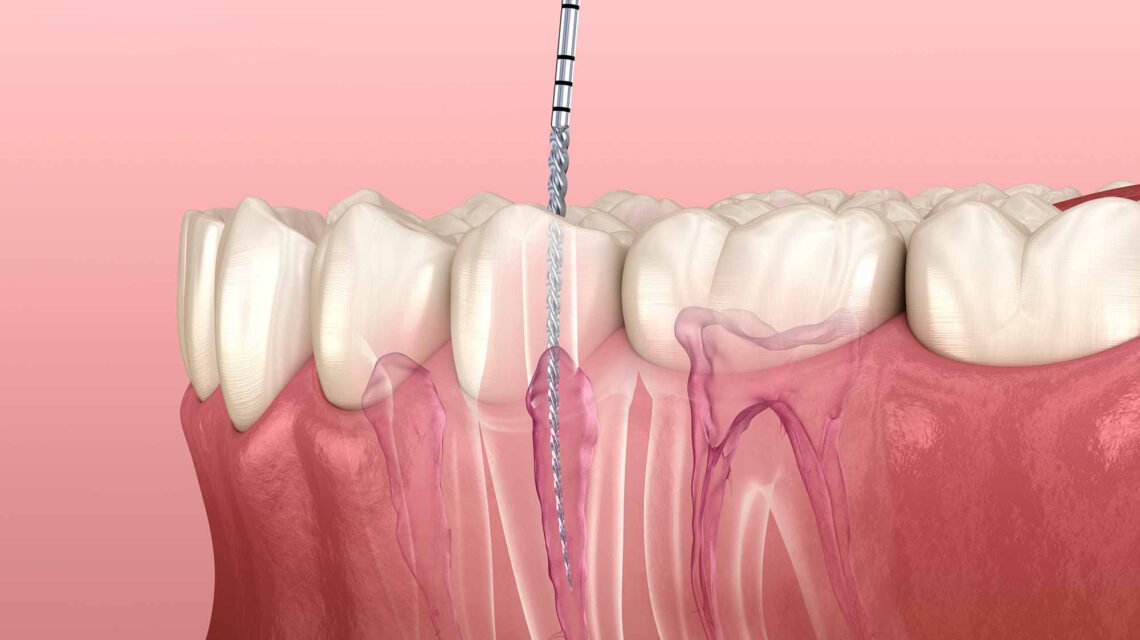Know all about RCT ( Root Canal Treatment )
What is RCT ( Root Canal Treatment)
Root canal treatment (RCT) is a dental procedure used to treat infection of dental pulp and peri-apical tissues. This is needed when naturally occurring bacteria of oral cavity invade the tooth and reaches the pulp. Root Canal treatment is done to repair and save a badly damaged or infected tooth instead of removing it. Getting a root canal is relatively painless and extremely effective. You’ll be back to smiling, biting and chewing with ease in no time. It can be completed in single visit only but if the infection is moderate to severe or abscess/pus is present then it may take multiple visits too.
Structure of tooth: Tooth consists of 2 parts: Crown and Root. Crown is what is visible in mouth and root is what remains anchored in the jaw bone. Tooth has 3 different layers:
Enamel- The outermost & hardest layer.
Dentine- The second layer comparatively less hard than enamel and it forms most of the tooth.
Pulp- Third, soft layer of tooth containing blood and nerve supply. This extends from the crown to the apex of the root.
Cementum- Covers root only.
Symptoms that you require RCT:
The few common symptoms which indicate that your tooth requires RCT are: Persistent pain, sensitivity to hot and cold, discoloured tooth, cracked or chipped tooth, deep decay, swollen gums or presence of pus pimple on the gums.
Procedure:
RCT is performed after confirming the extent of bacteria into the pulp through radiographs (X-Rays).
First of all local anaesthesia is given that numbs the tooth and gums of that area.
Access opening: A small hole is made at the centre of the tooth to enter into the pulp by drilling it with burs.
Working Length Determination: After entering into the pulp measurement of the root canal length is done with the help of files (Cutting & Shaping instruments).
Biomechanical Preparation: Once the length is established widening, cleaning and shaping of canals is done with a sequence of files from smaller to larger taper.
Disinfection: During this procedure different solutions and medicines are used to disinfect the tooth.
Obturation: Once the infection subsides the canals are filled with root canal filling materials, most commonly Gutta Percha.
Post-Operative Restoration: Chamber or crown part is filled with different filling material to ensure a proper seal. Root canal treated tooth are more likely to break than healthy unrestored teeth so a crown (Cap) is suggested to protect a tooth from breakage.
What is Crown: A crown is a cap that completely covers a real tooth. It might be necessary to use a crown after root canal treatment to prevent the tooth fracturing.
Crowns can be made from: Metal or porcelain (or both), A ceramic material, Powdered glass.
The dentist use a drill to reduce the size of your tooth and use the crown to replace what is removed. A mould or impression of your tooth is taken to ensure the crown is of right size & shape and fits on your tooth accurately. When fitting the crown, cement will be used to glue the crown to the trimmed-down tooth. If there is only a small amount of tooth left after the root canal treatment, a post can be cemented in the root canal and used to help keep the crown in place.


